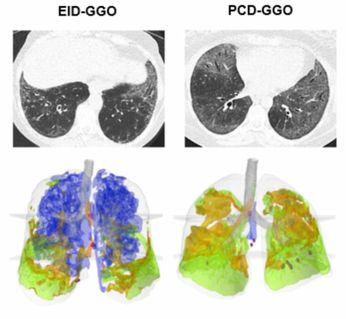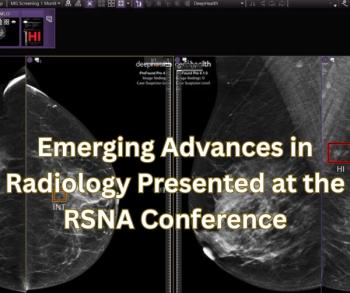
Meta-Analysis Assesses Impact of Radiomics for Predicting Hepatocellular Carcinoma Recurrence
A 49-study meta-analysis revealed that MRI-based and CT-based radiomics models outperformed clinical models for predicting recurrence of hepatocellular carcinoma.
Radiomics models based on magnetic resonance imaging (MRI) or computed tomography offer a superior concordance index (C-index), sensitivity and specificity than clinical models for predicting hepatocellular carcinoma (HCC), according to a new meta-analysis.
For the meta-analysis, recently published in
The researchers found that the CT-based radiomics model had a 74.7 percent C-index, 72 percent sensitivity and 77 percent specificity in the validation cohort. In validation testing, the MRI-based radiomics model offered a 78.8 percent C-index, 74 percent sensitivity and 78 percent specificity. In contrast, the study authors noted that validation testing with clinical models revealed a 67.1 percent C-index, 66 percent sensitivity and 71 percent specificity for predicting HCC recurrence.
In comparison to the clinical model alone, the study authors also noted that combining the MRI-based radiomics model with the clinical model in a validation cohort resulted in a greater than 15 percent improvement in the C-index (82.6 percent), a 16 percent improvement in sensitivity (82 percent) and an 11 percent improvement in specificity (82 percent) for predicting HCC recurrence.
The researchers also noted differences between the clinical model alone versus the combination of the CT-based radiomics model and clinical model in validation testing, citing a nearly 12 percent C-index improvement (79 percent), a 5 percent increase in sensitivity (71 percent) and a 7 percent increase in specificity (78 percent).
“The analysis results suggest that the radiomics signature has the potential to be a useful tool for predicting HCC recurrence. Furthermore, it is found that combined models integrating clinical factors and radiomics signatures (regardless of the modality used) perform better compared to those using clinical variables alone,” wrote study co-author Pin-Tong Huang, M.D., a professor, chief physician and chair of the Ultrasound Department at the Second Affiliated Hospital of Zhejiang University School of Medicine in Hangzhou, China, and colleagues.
The results were more mixed with ultrasound-based radiomics models, according to the researchers. In the validation cohort, the CEUS-based radiomics model had a 76.3 percent C-index, sensitivity ranging between 58 and 90 percent, and specificity ranging between 58 and 96 percent. In the validation cohort of one study, an ultrasound-based radiomics model offered a 56 percent C-index, 35 percent sensitivity and 96 percent specificity.
While noting the limited number of ultrasound and CEUS studies in the meta-analysis and conceding that ultrasound-based radiomics models “exhibit certain limitations,” Huang and colleagues noted improved HCC recurrence prediction with combined ultrasound-based radiomics and clinical models. In a validation cohort, the combined ultrasound model exhibited a 76 percent C-index, 69 percent sensitivity and 93 percent specificity.
“Our meta-analysis indicates that the radiomics model based solely on ultrasound images is less adept at predicting HCC recurrence when compared to the model based on clinical characteristics, whereas the combined model incorporating (ultrasound)-based radiomics and clinical features outperforms the model grounded solely in clinical features,” added Huang and colleagues.
(Editor’s note: For related content, see ”
In regard to study limitations, the study authors noted the majority of the reviewed studies involved single-center research conducted in China, which may limit extrapolation of meta-analysis findings to a broader population. The researchers also conceded a degree of heterogeneity with respect to the modeling methods, feature extract and imaging modality utilized in the reviewed studies.
Newsletter
Stay at the forefront of radiology with the Diagnostic Imaging newsletter, delivering the latest news, clinical insights, and imaging advancements for today’s radiologists.




























